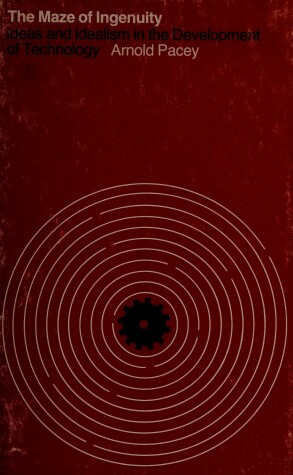The MIT Press
3 total works
Most general histories of technology are Eurocentrist, focusing on a main line of western technology that stretches from the Greeks through the computer. In this very different book Arnold Pacey takes a global view, placing the development of technology squarely in a "world civilization." He portrays the process as a complex dialectic by which inventions borrowed from one culture are adopted to suit another. Pacey's argument is both original and compelling. He demonstrates that western technology is an amalgam of cross-fertilizations from the great civilizations of China, India, and Islam and from the apparently primitive cultures of peasant farmers in Africa or Inuit hunters in the Arctic. In a lively and readable style, Pacey explains exactly how technologies (which he broadly defines to include such critical practices as agriculture and health care) were diffused across Asia to Africa and Europe, and then back again. A failure to appreciate the importance of this type of dialogue, Pacey observes, has often led to misguided programs that have sought to impose technologies on less developed nations without allowing for responsive innovation. Covering the period from 700 to 1970, Pacey contrasts innovations based on critical survival needs with high technologies symbolizing the values of major civilizations. Examples include the Chinese gunpowder that provoked a more formida ble cannon in Europe, Indian textile techniques that spurred the Industrial Revolution in Britain, and transistors from the U.S. that stimulated new kinds of consumer products in Japan. In m any cases, Pacey notes, technology is less the result of a direct transfer than of the diffusion of stimuli. Even "a mererumor of an unfamiliar technique" could produce new ways to achieve similar results. Arnold Pacey is a physicist turned historian whose publications have contributed to the British appropriate technology movement. He has written widely on science, technology, and agriculture. His previous books include "The Maze of Ingenuity and "The Culture of Technology.
The Culture of Technology examines our often conflicting attitudes toward nuclear weapons, biological technologies, pollution, Third World development, automation, social medicine, and industrial decline. It disputes the common idea that technology is "value-free" and shows that its development and use are conditioned by many factors-political and cultural as well as economic and scientific. Many examples from a variety of cultures are presented. These range from the impact of snowmobiles in North America to the use of water pumps in rural India, and from homemade toys in Africa to electricity generation in Britain-all showing how the complex interaction of many influences in every community affects technological practice.
Arnold Pacey, who lives near Oxford, England, has a degree in physics and has lectured on both the history of technology and technology policy, with a particular focus on the development of technologies appropriate to Third World needs. He is the author of The Maze of Ingenuity (MIT Press paperback).
From cathedrals to star wars, Arnold Pacey looks at the interaction of technologies and society over the last thousand years and uses that survey to argue for a more humane form of future technological development. The second edition of The Maze of Ingenuity concentrates on Europe and North America and incorporates recent insights from the history and sociology of technology. A new series of chapters extends Pacey's discussion of the role of ideas and ideals in technology in the period since the industrial revolution.
Contents
The Cathedral Builders: European Technical Achievement between 1100 and 1280 * A Century of Invention: 1250-1350 * Mathematics and the Arts: 1450-1600 * The Practical Arts and the Scientific Revolution * Social Ideals in Technical Change: German Miners and English Puritans, 1450-1650 * The State and Technical Progress: 1660-1770 * Technology in the Industrial Revolution * Conflicting Ideals in Engineering: America and Britain, 1790-1870 * Institutionalizing Technical Ideals, 1820-1920 * Idealistic Trends in Twentieth-Century Technology
Contents
The Cathedral Builders: European Technical Achievement between 1100 and 1280 * A Century of Invention: 1250-1350 * Mathematics and the Arts: 1450-1600 * The Practical Arts and the Scientific Revolution * Social Ideals in Technical Change: German Miners and English Puritans, 1450-1650 * The State and Technical Progress: 1660-1770 * Technology in the Industrial Revolution * Conflicting Ideals in Engineering: America and Britain, 1790-1870 * Institutionalizing Technical Ideals, 1820-1920 * Idealistic Trends in Twentieth-Century Technology


